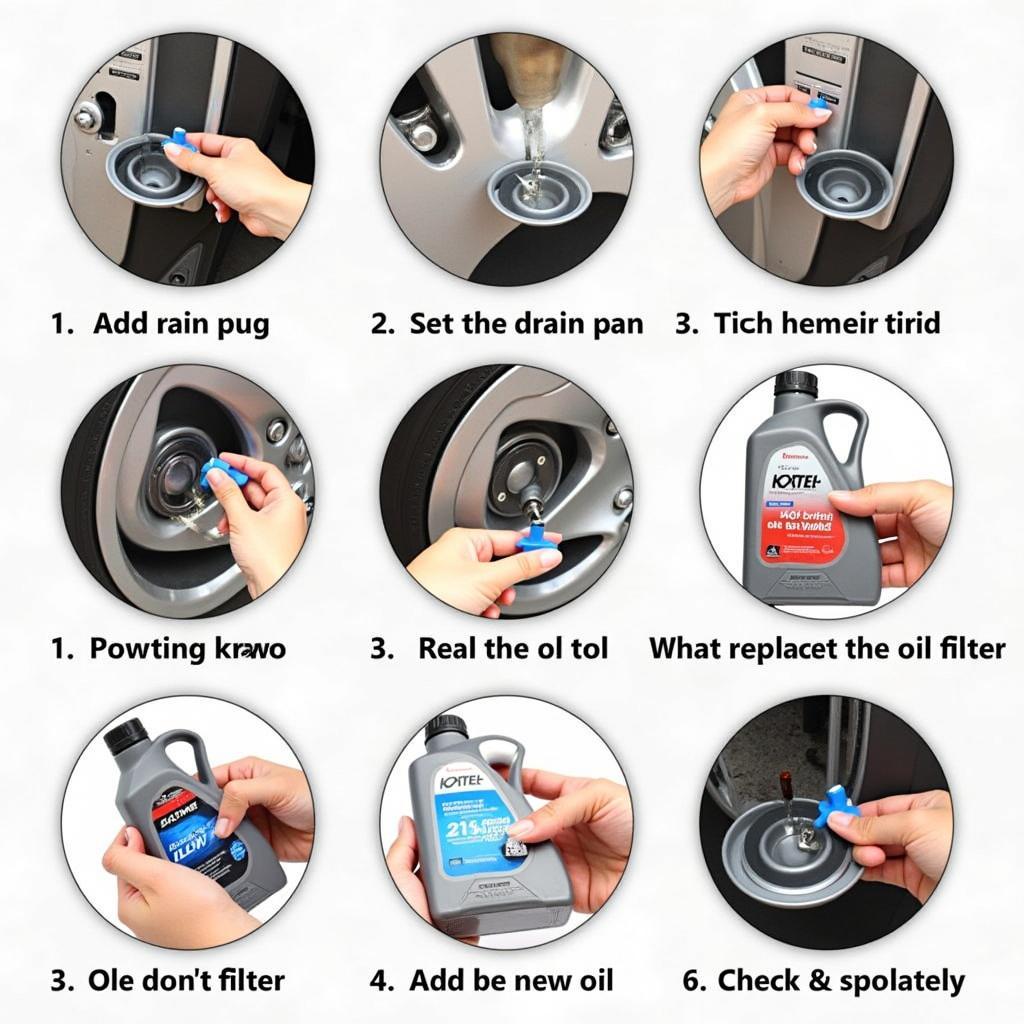Car maintenance can seem daunting, especially when considering How To Service Car At Home. But with the right knowledge and tools, many basic car servicing tasks can be performed in your own driveway, saving you money and giving you a better understanding of your vehicle. This guide will walk you through essential at-home car service procedures, offering tips and advice for a successful DIY experience.
Is it really possible to service your car at home? Absolutely! While complex repairs are best left to professionals, routine maintenance is often surprisingly straightforward. This guide will empower you to tackle these tasks, boosting your confidence and saving you trips to the mechanic. Want to learn more about having your car serviced at home by professionals? Check out how is free service done car home pick up.
Essential Tools for At-Home Car Service
Before diving into how to service car at home, gather the necessary tools. Having the right equipment on hand will make the process smoother and more efficient. A basic toolkit should include:
- Wrenches and Sockets: A variety of sizes to fit different nuts and bolts.
- Screwdrivers: Phillips and flathead, in various sizes.
- Pliers: Needle-nose, slip-joint, and locking pliers.
- Jack and Jack Stands: Essential for safely lifting the vehicle.
- Oil Drain Pan: To collect used oil.
- Funnel: For adding new fluids.
- Gloves: To protect your hands.
- Safety Glasses: To protect your eyes.
Having these tools readily available will set you up for success in your at-home car service endeavors. You can find more information about at-home car services in different languages, such as how to service car at home in hindi.
Changing Your Car’s Oil
One of the most common and essential car maintenance tasks is changing the oil. This is a relatively simple procedure that can be done at home, even with limited experience.
- Warm up the engine: A warm engine allows the oil to flow more freely.
- Locate the oil drain plug: Consult your owner’s manual for the exact location.
- Position the drain pan: Place it beneath the drain plug.
- Remove the drain plug: Use the appropriate wrench.
- Let the oil drain completely: This may take 15-20 minutes.
- Replace the drain plug: Tighten it securely.
- Locate the oil filter: Again, consult your owner’s manual.
- Remove and replace the oil filter: Be sure to lubricate the new filter’s gasket.
- Add new oil: Use the recommended oil type and quantity specified in your owner’s manual.
- Check the oil level: Use the dipstick to ensure it’s within the recommended range.
“Regular oil changes are crucial for engine longevity,” advises John Miller, ASE Certified Master Technician. “Fresh oil lubricates the engine’s moving parts, reducing friction and preventing wear and tear.” For those looking for professional at-home car services, consider exploring options like can the car service centre people come at home.
 Step-by-Step Guide to Changing Car Oil at Home
Step-by-Step Guide to Changing Car Oil at Home
Checking and Replacing Air Filters
Another simple yet important task is checking and replacing your car’s air filters. Both the engine air filter and the cabin air filter play crucial roles in keeping your car running smoothly and providing clean air for the occupants.
- Engine Air Filter: This filter prevents dirt and debris from entering the engine. A dirty air filter can restrict airflow, reducing engine performance.
- Cabin Air Filter: This filter cleans the air that enters the passenger compartment, removing pollen, dust, and other pollutants.
Replacing these filters is usually straightforward and requires minimal tools. You can find video tutorials demonstrating the process, like how to do amaze car service at home you tube. Remember to consult your owner’s manual for the specific location and replacement procedure for your car model.
Inspecting and Topping Up Fluids
Regularly inspecting and topping up your car’s fluids is essential for its proper functioning. Key fluids to check include:
- Coolant: Keeps the engine from overheating.
- Brake fluid: Ensures proper braking function.
- Power steering fluid: Assists in steering.
- Windshield washer fluid: Keeps your windshield clean.
- Transmission fluid: Lubricates the transmission.
Check your owner’s manual for the location of each fluid reservoir and the recommended fluid type. “Maintaining proper fluid levels is crucial for preventing potential damage and ensuring safe operation,” emphasizes Sarah Chen, Automotive Engineer.
Conclusion
Learning how to service car at home can empower you to take control of your vehicle’s maintenance, saving you money and providing a deeper understanding of how your car works. While complex repairs should be left to professionals, mastering these basic tasks will contribute to the longevity and performance of your vehicle. Remember to always consult your owner’s manual for specific instructions and safety precautions. For more information about specific car brands and their free home pick-up services, check how is free service car home pick up tata.
FAQ
- How often should I change my car’s oil?
- What type of oil should I use for my car?
- How do I know when my air filter needs replacing?
- What are the signs of low brake fluid?
- How often should I check my coolant level?
- What should I do if I overfill a fluid reservoir?
- Where can I find reliable information about my specific car model?
Need further assistance with your car service? Contact us via WhatsApp: +1(641)206-8880 or Email: [email protected]. Our 24/7 customer service team is ready to help.

